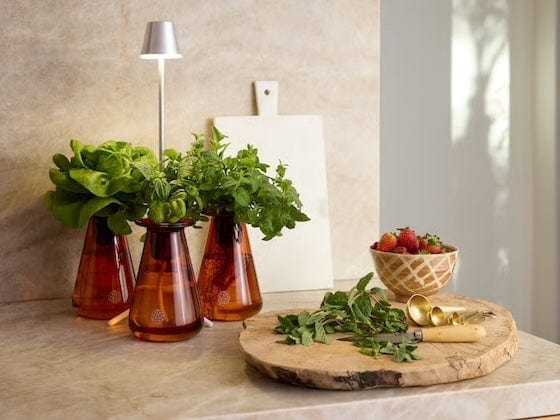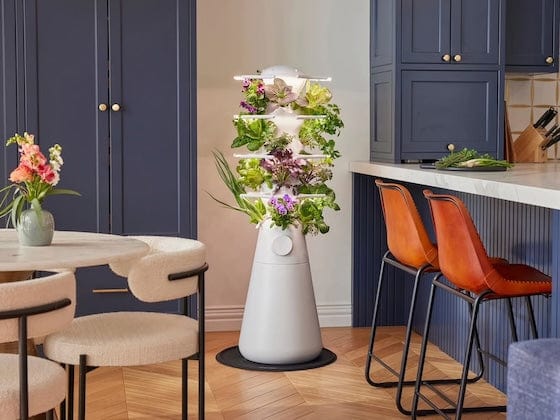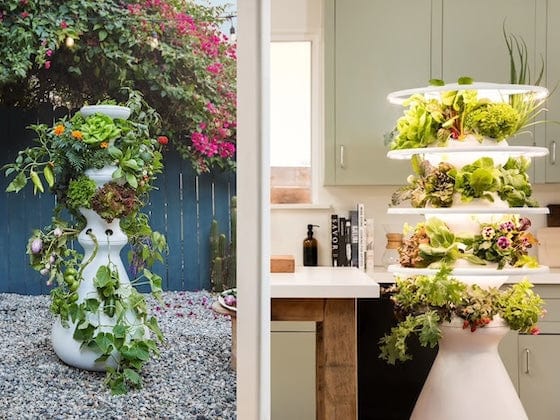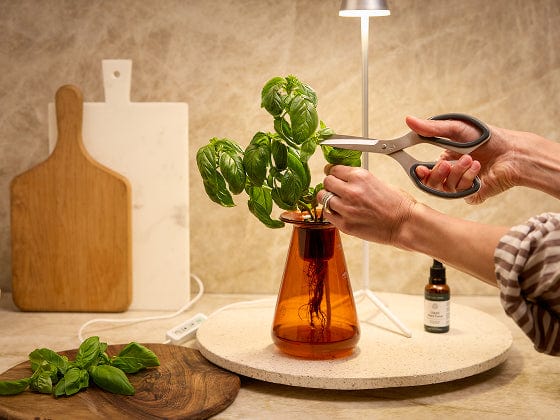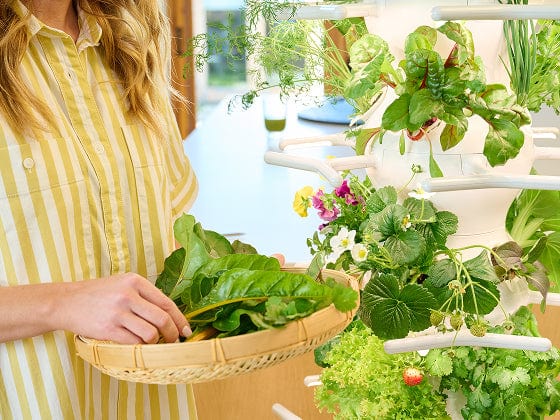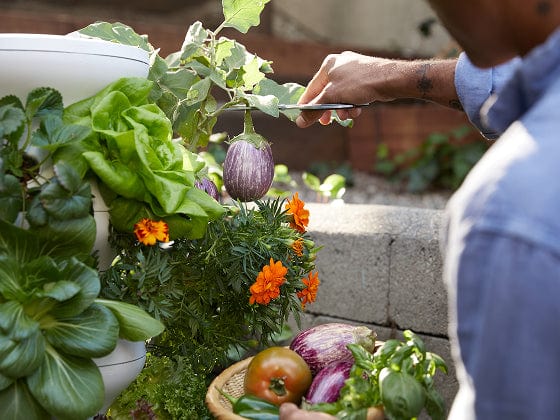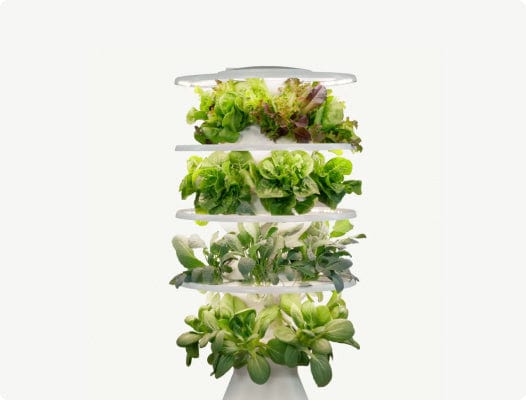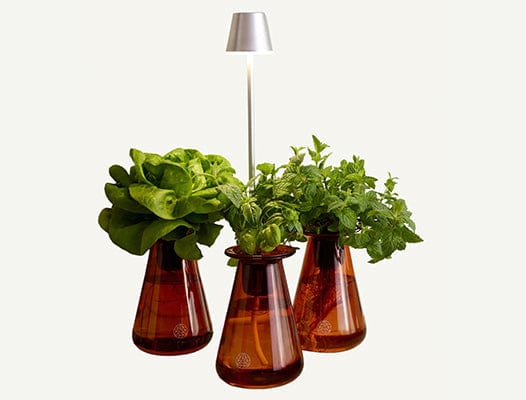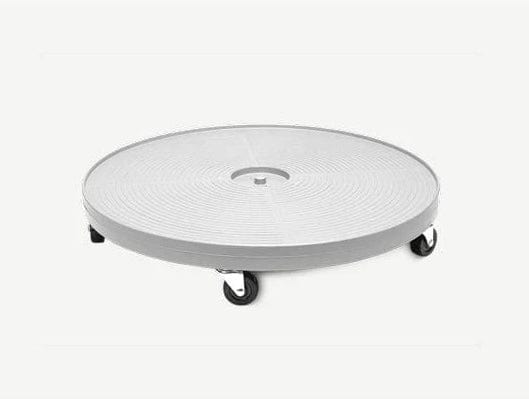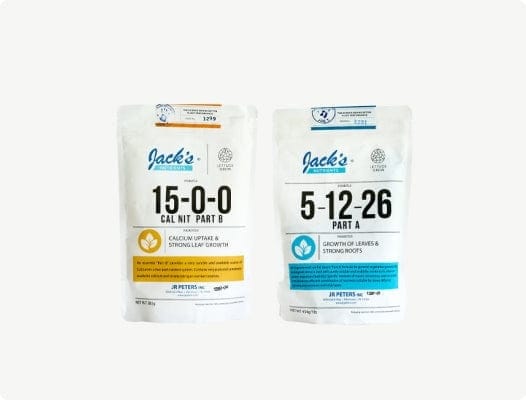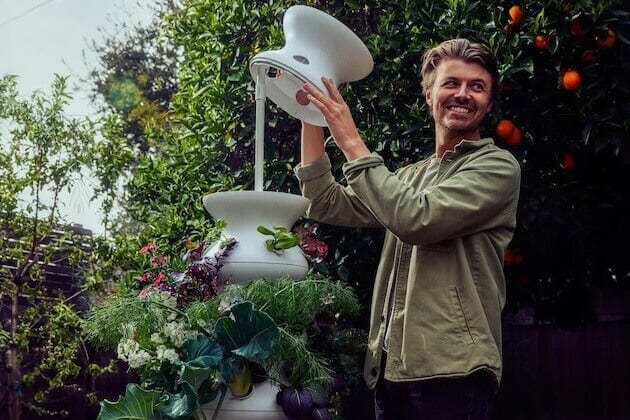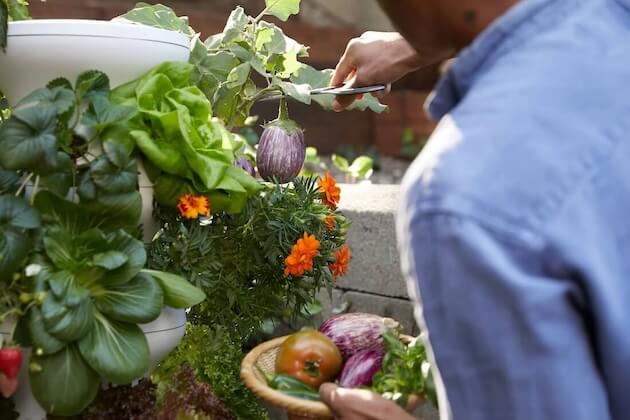Regular maintenance is key to a healthy, thriving Farmstand.
We recommend a Quarterly Reset every 3 months (once per season). This process gives your system a deep clean, keeps all components working properly, and sets the stage for your next growing cycle.
It’s normal for your Farmstand to get a bit dirty over the course of a season—dust can settle on the outside, roots can grow large inside, and nutrients or debris may accumulate in the reservoir. A reset keeps everything clean and running smoothly.
Below, we’ll walk you through refreshing your entire Farmstand, ensuring it's in top shape for your next growing cycle!
About the Cleaning Kit
Our Farmstand Cleaning Kit is sold separately and includes citric acid solution, an eco-friendly brush, and a microfiber towel. While optional, it makes resets much easier and more effective.
Reset Steps
- Remove plants: Harvest what’s ready, compost what isn’t healthy, and set aside any you want to replant. Keep plants in their grow cups and place roots in a bowl or tub of water in partial shade to prevent drying out.
- Disassemble your Farmstand: Take apart the levels, cups, pipe, and diffuser until only the tank and pump remain.
- Dump old water: Make this step effortless with the Hose Coupler (included in the Cleaning Kit) — just connect a garden hose for quick, mess-free draining. Without it, you’ll need to carefully tilt the tank to empty.
- Scrub & wipe: Use a brush to remove roots, grow medium, and plant bits from the tank and levels. Wipe surfaces with a microfiber towel.
-
Deep clean (optional but recommended):
-
Unplug the pump, place it back in the tank, and fill the tank about ⅓ with warm water (water level above the pump).
-
Mix in 3 tablespoons of Citric Acid Cleaning Solution (part of the optional Cleaning Kit).
-
Stir with the pipe, add cups and sleeves, then reassemble the Farmstand. Run the pump for 2–3 hours.
-
-
Final rinse: Disassemble again and drain the solution. Wipe with the towel. For tough spots, mix ½ tablespoon of Citric Acid Solution with 8–10 oz of water, apply, wait 5 minutes, and scrub. Rinsing is optional—any leftover citric acid is harmless to plants.
-
Reassemble & restart: Put the Farmstand back together, add fresh water and nutrients, and replant your seedlings.
💡 It can be helpful to leave your Farmstand empty for a few days after a reset to ensure any pests or disease have completely gone.
Why a Reset Matters
Large Root Systems
As plants mature, roots expand inside the Nook. They can dip into the reservoir, clog the pump, or block water flow to other seedlings. Resetting removes these obstructions so every plant gets what it needs.
Remove Old Water
Root bits, grow medium, and nutrient buildup collect at the bottom of the tank over time. Replacing old water with fresh makes it easier to balance pH, improves nutrient absorption, and reduces conditions where algae or bacteria thrive.
Make Room for New Seedlings
Older plants eventually bolt, decline, or attract pests. Removing them during a reset ensures you get the best harvests while making space for fresh seedlings.
Start Fresh if Needed
If your Farmstand faces widespread pests, fungal issues, or disease, a reset is the fastest way to clear the problem and protect new seedlings. Leaving your Farmstand empty for a few days after cleaning can also help ensure pests are gone.
How to Take Care of Plants During a Reset
You can also keep the plants in your Farmstand and replant them once your reset is complete! Here’s what to do:
-
Remove the plants in your Farmstand (keeping them in their grow cups).
-
Place the plant’s grow medium and root system in a bowl or tub filled with water to keep them hydrated.
-
Put them in a shady or partially shaded area.
Plants may experience some shock when they are replanted after a reset. They can look slightly wilted, experience some browning on their leaves, or drop flowers. This happens because they are adjusting to the new environment, but it should pass after a few days to a week.
